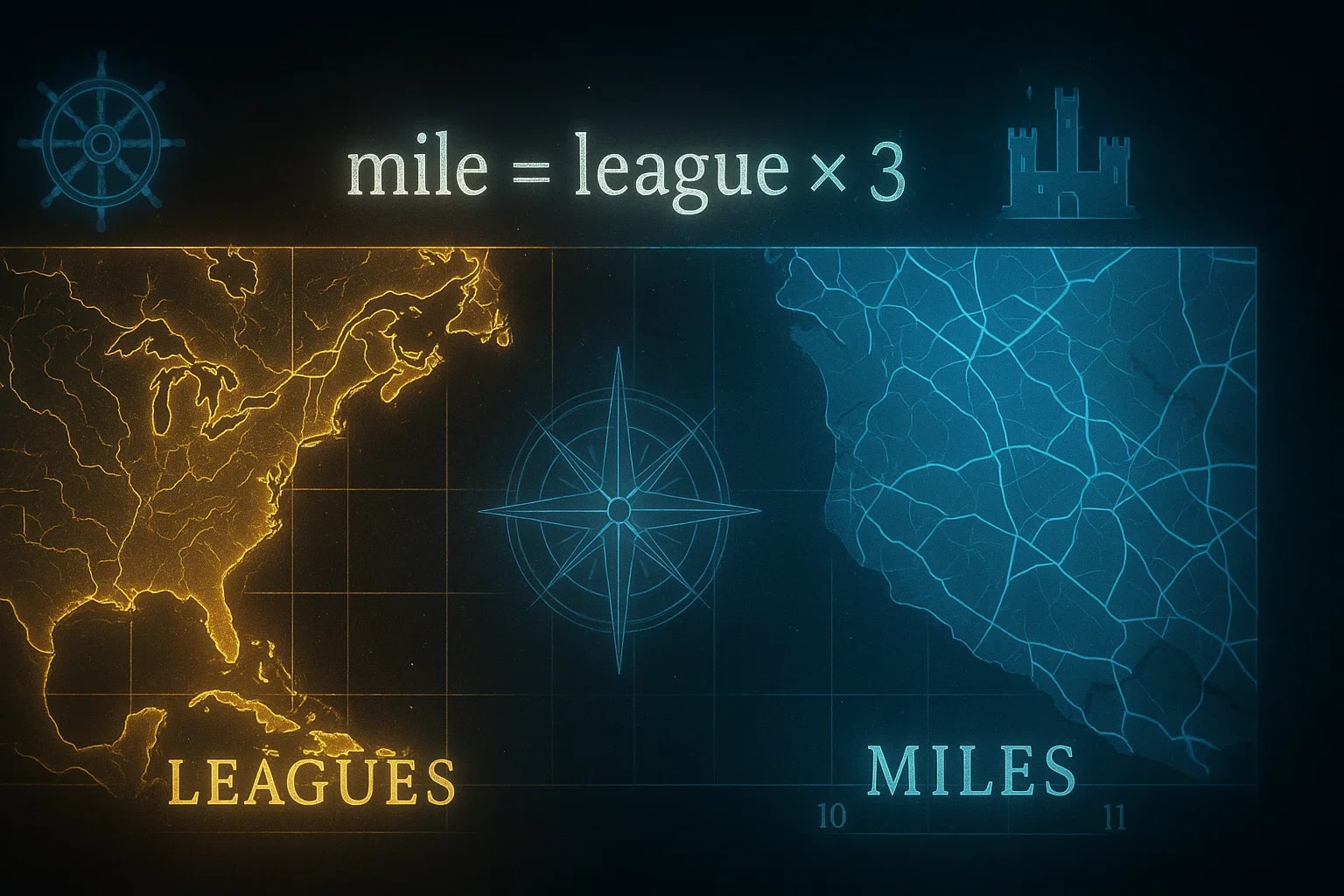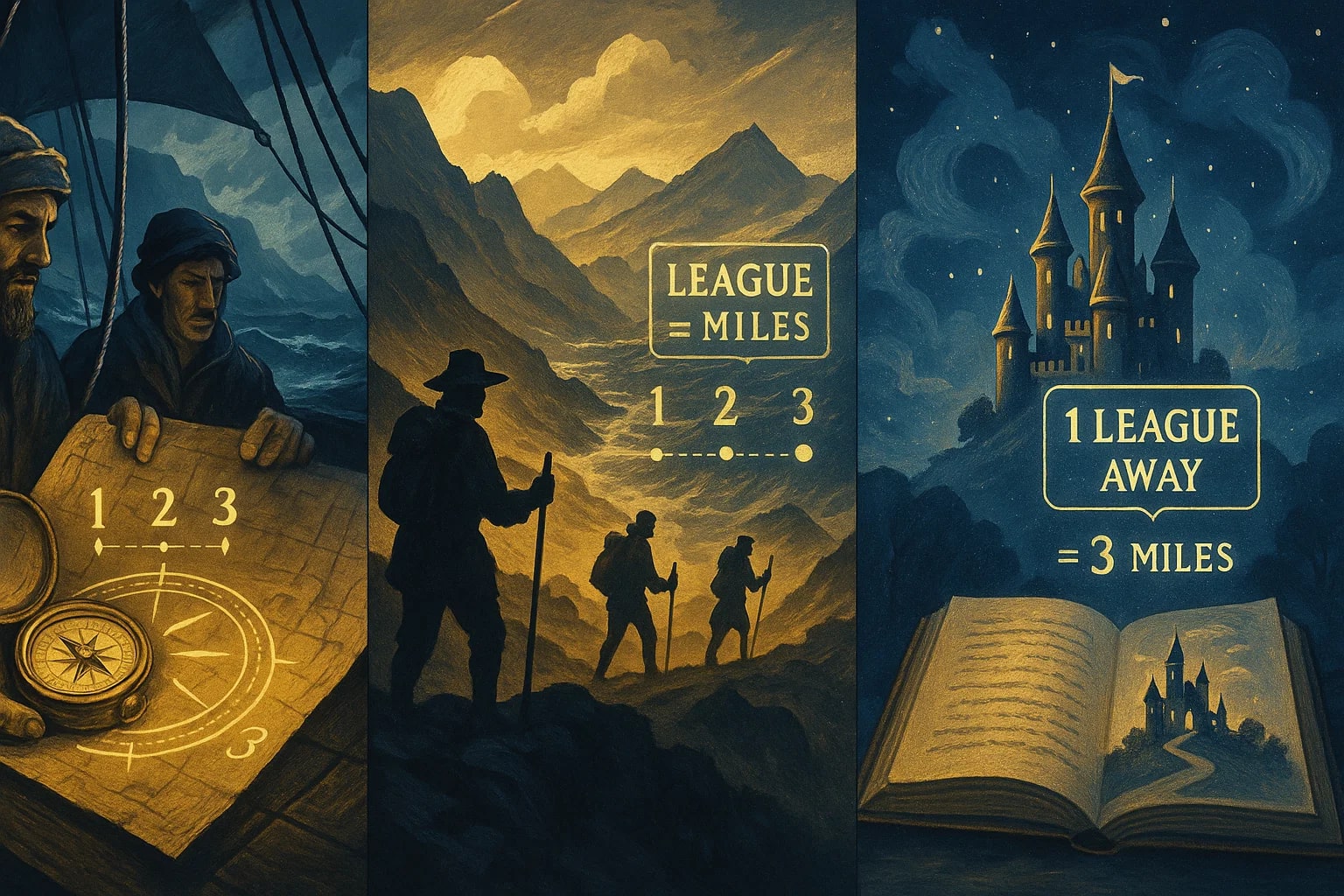league to mile – How to convert lea to mi
Converting from league to mile connects one of the most iconic historical units with a still widely used imperial measure. The league was once used to estimate how far someone could walk in an hour, while the mile remains central to road distances in the U.S. and U.K. Knowing how to convert lea to mi is useful for interpreting historical texts, nautical records, and even classic literature.

What is a League (lea)?
A league traditionally equals 3 miles, though its exact value varied by country and time. It was often used at sea and on land to describe journey lengths before standardization.
What is a Mile (mi)?
A mile equals 5280 feet or 1.609 kilometers. It has Roman origins and remains in common use in the United States, United Kingdom, and a few other countries for road travel and maps.
How to Convert lea to mi
The formula is:
mile = league × 3
For example, let’s convert 7 lea into miles:
mile = 7 × 3 = 21 mi
So, 7 leagues = 21 miles.
For more conversions, you can try the Length Converter or explore more measurement options in the Conversion Tools.
Do you know?
-
The league was widely used in Europe, but its length varied—Spanish leagues were different from English ones.
-
Jules Verne’s famous novel Twenty Thousand Leagues Under the Seas referred to distance traveled, not depth. That equals about 60,000 miles!
-
In medieval times, leagues were tied to the distance a person or horse could travel in one hour.
-
The mile, originally from the Roman “mille passuum” (a thousand paces), became fixed at 5280 feet in 1593 under English law.
From Journeys to Stories
The league played an important role in navigation and exploration. Sailors and explorers often used it to estimate distances across seas or uncharted lands. Today, although leagues are no longer official, they live on in literature and folklore.
For example, maps in early novels or legends sometimes described castles or mountains as being “a league away.” Converting that into miles helps modern readers picture those distances more clearly.

Tradition Meets Modern Measure
The conversion from league to mile highlights how measurement connects history with practicality. Leagues may belong to the past, but miles remain part of daily life in many countries.
By applying this simple formula, you can move smoothly between old records and modern maps—keeping both tradition and precision alive.

